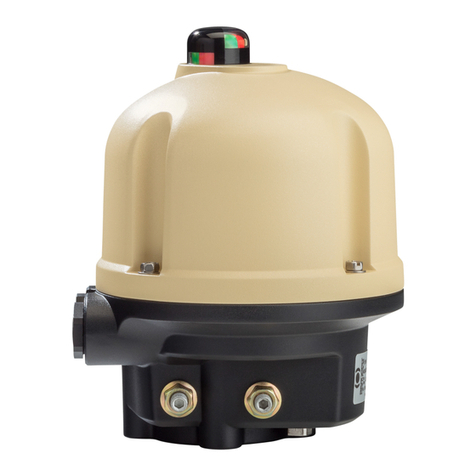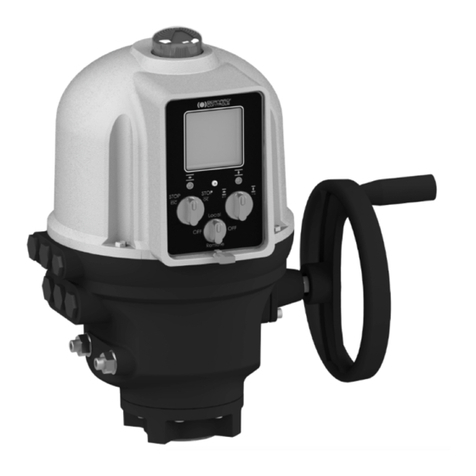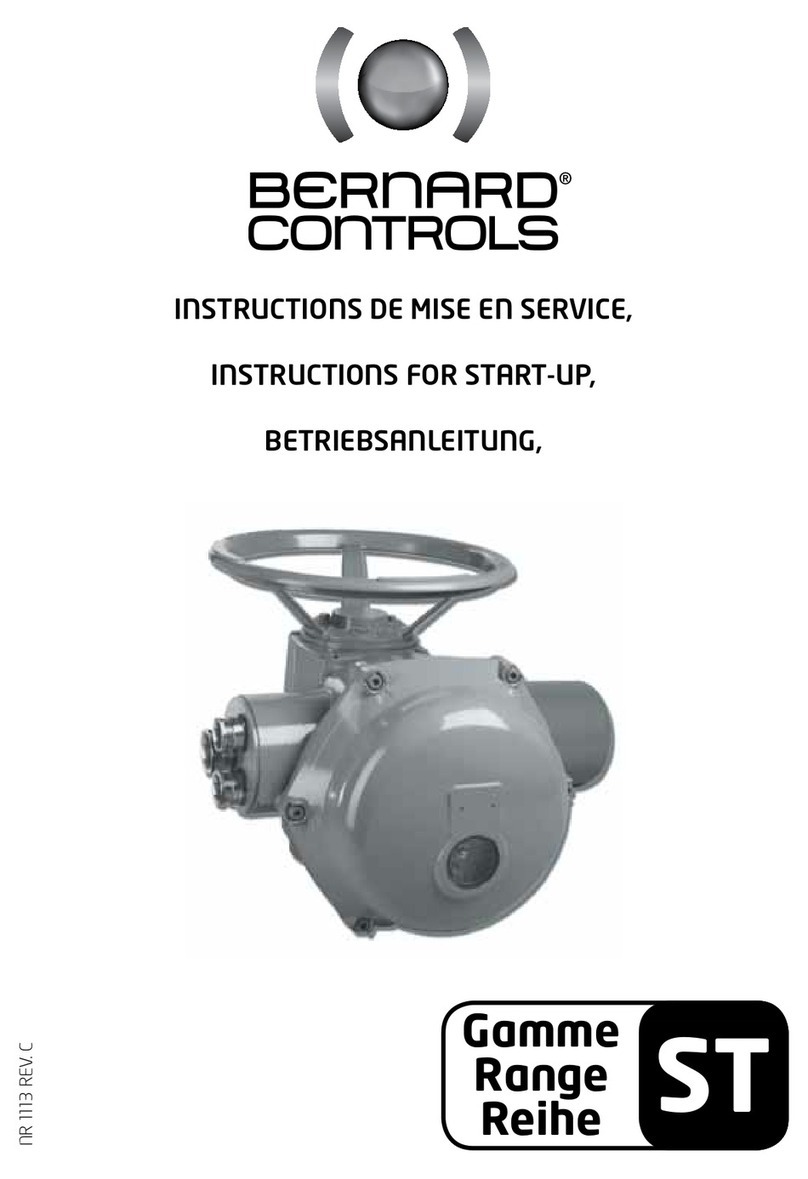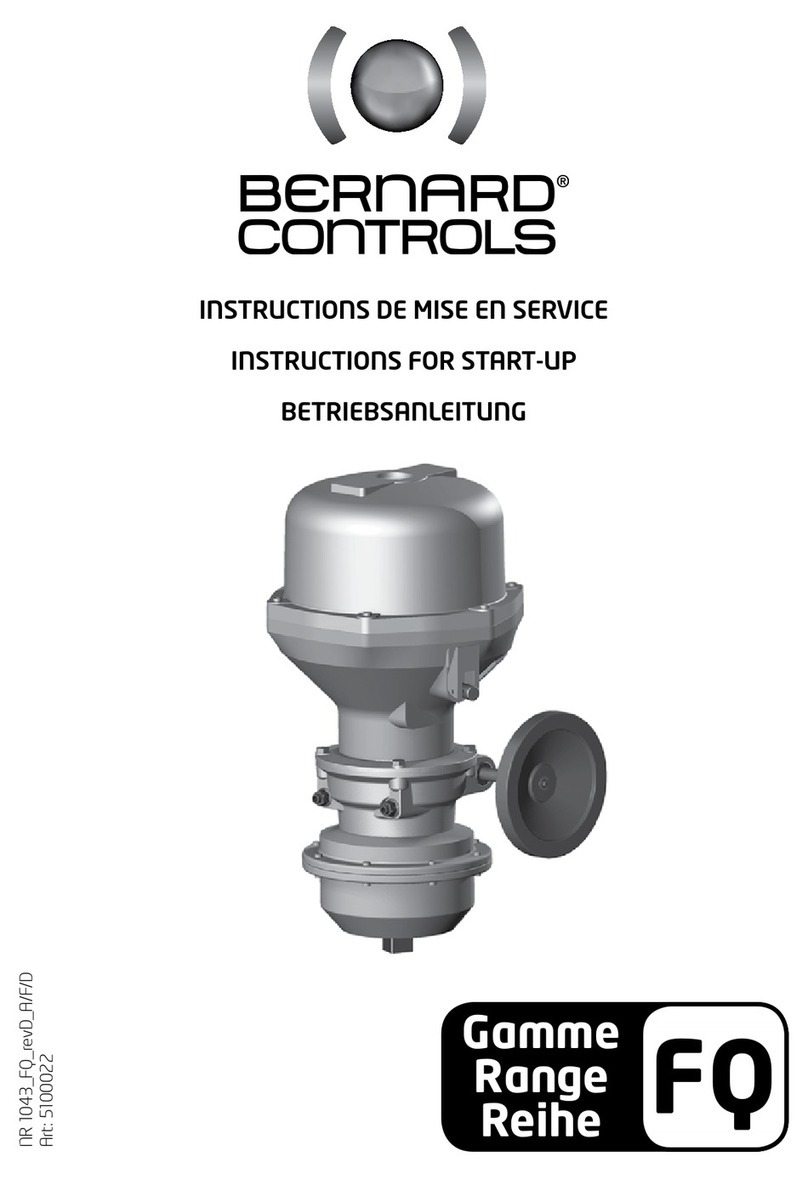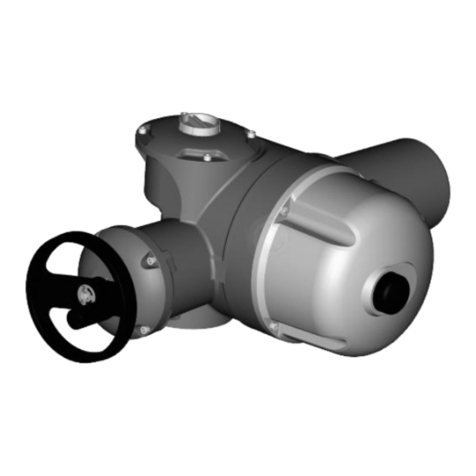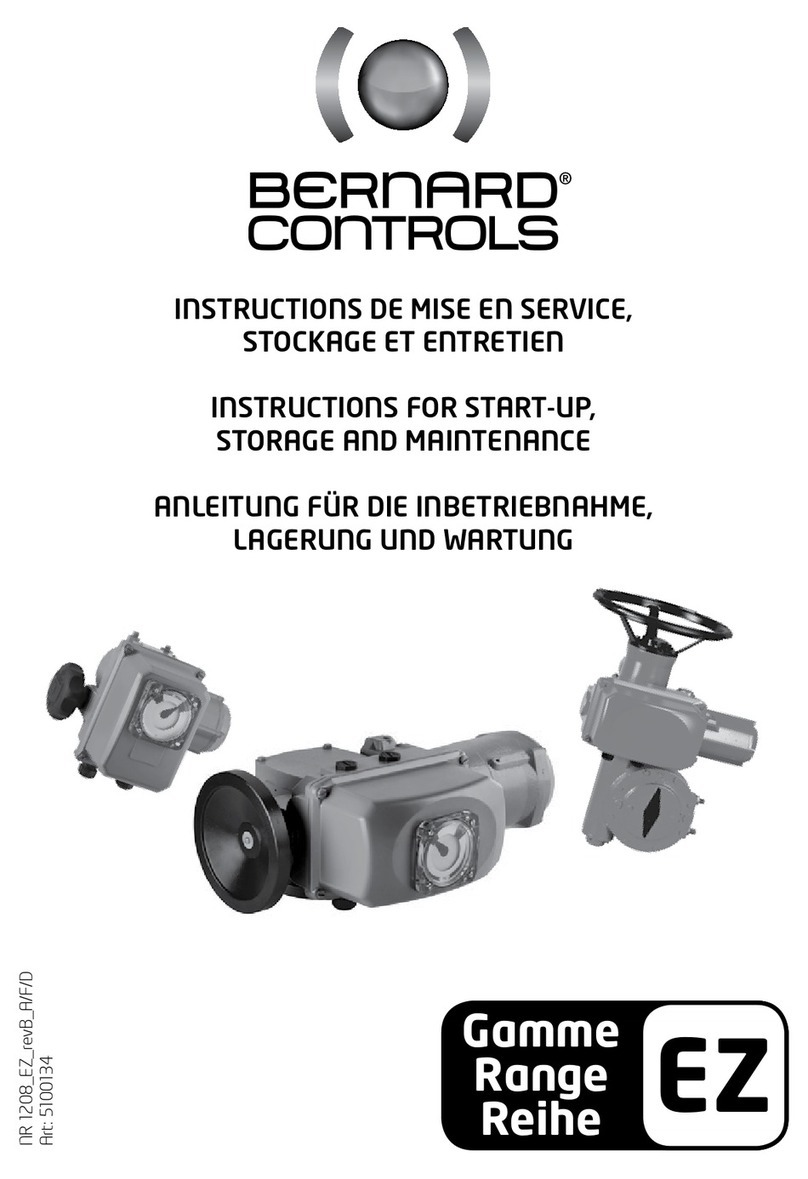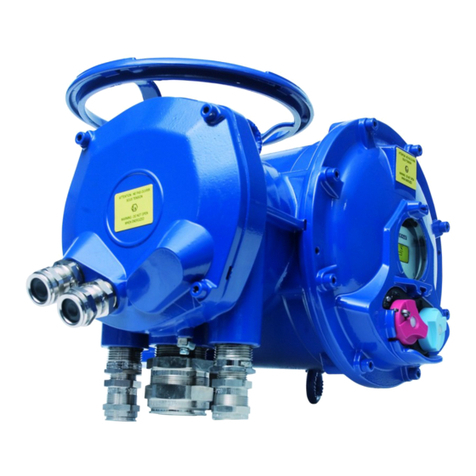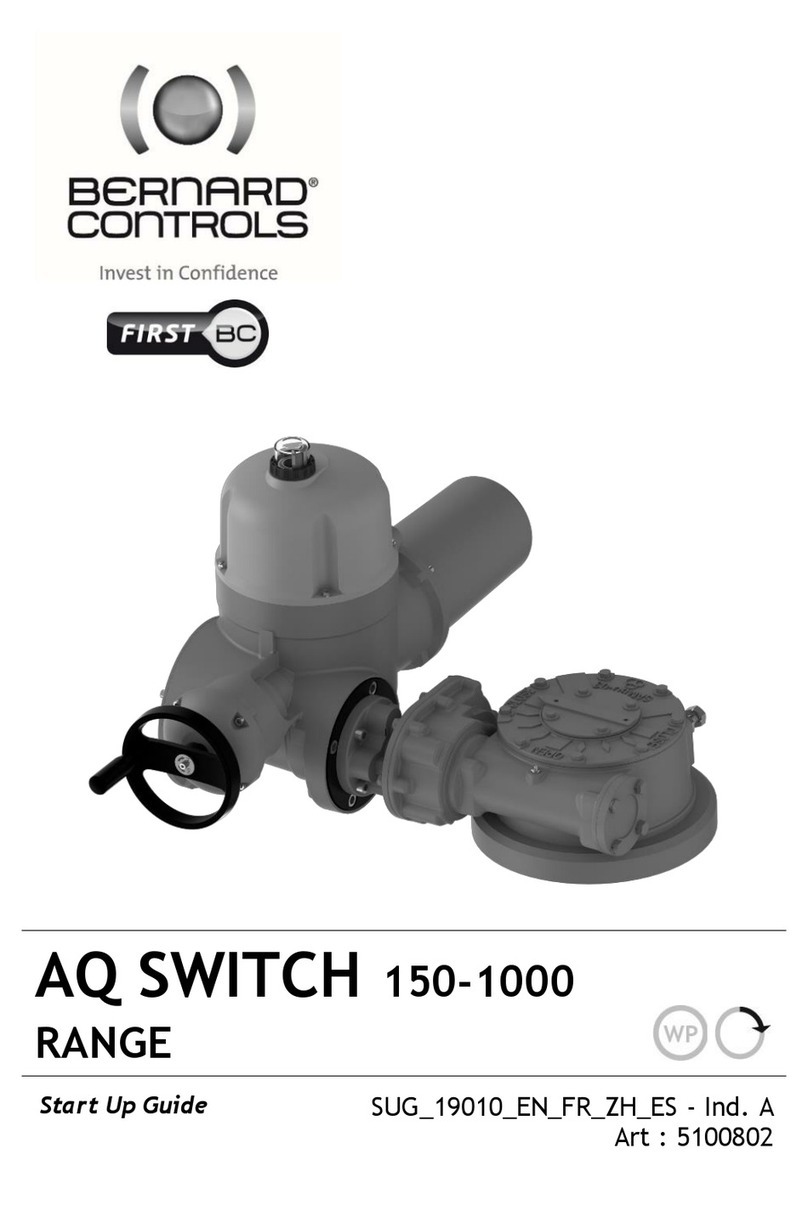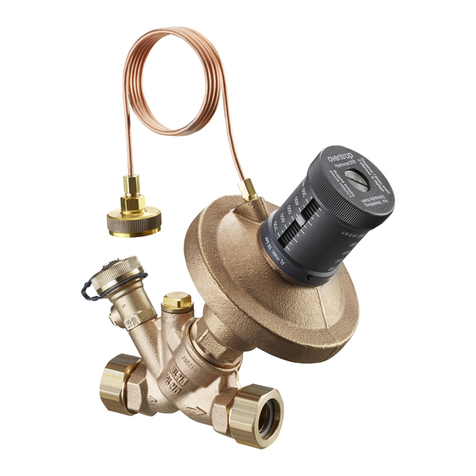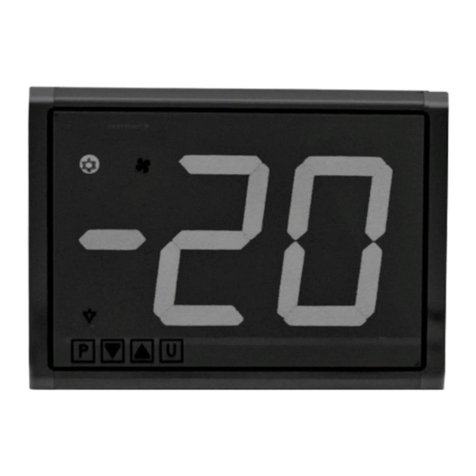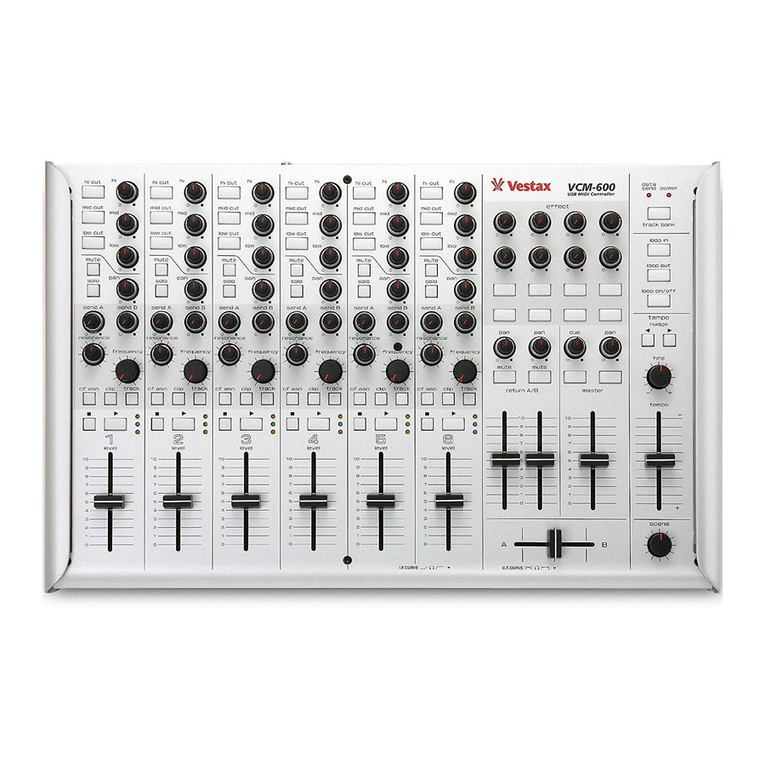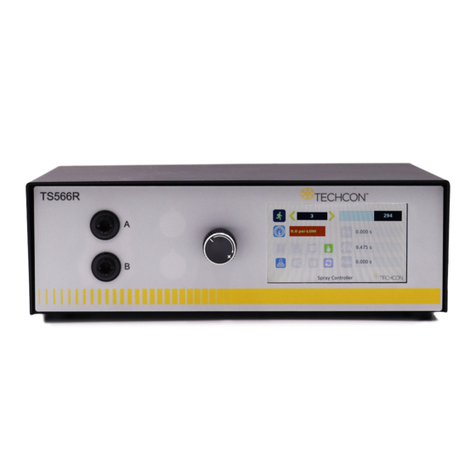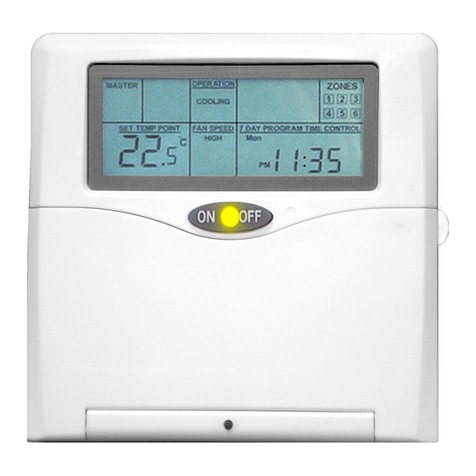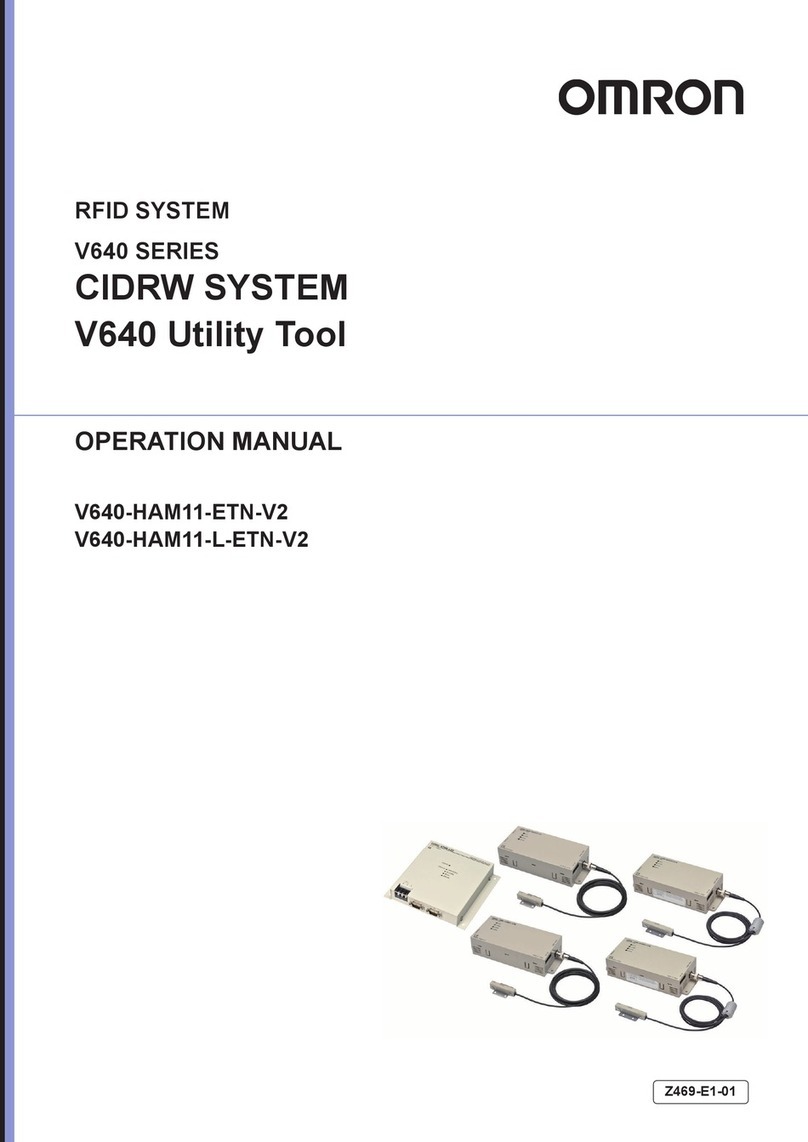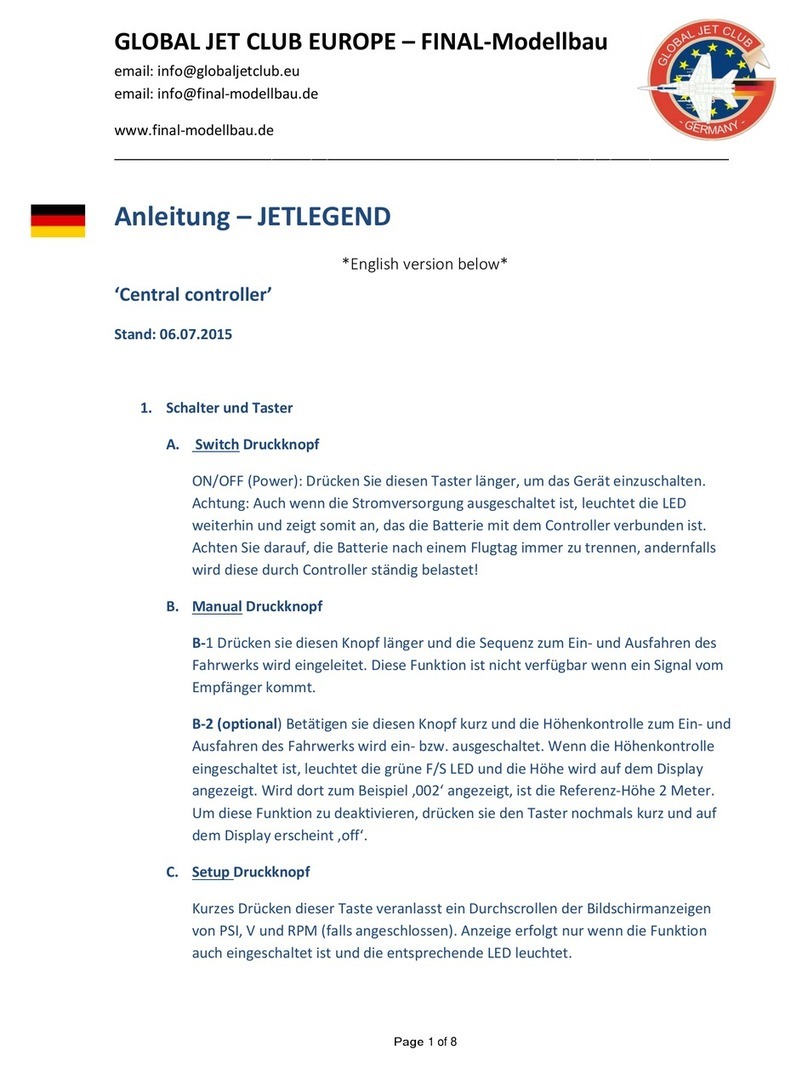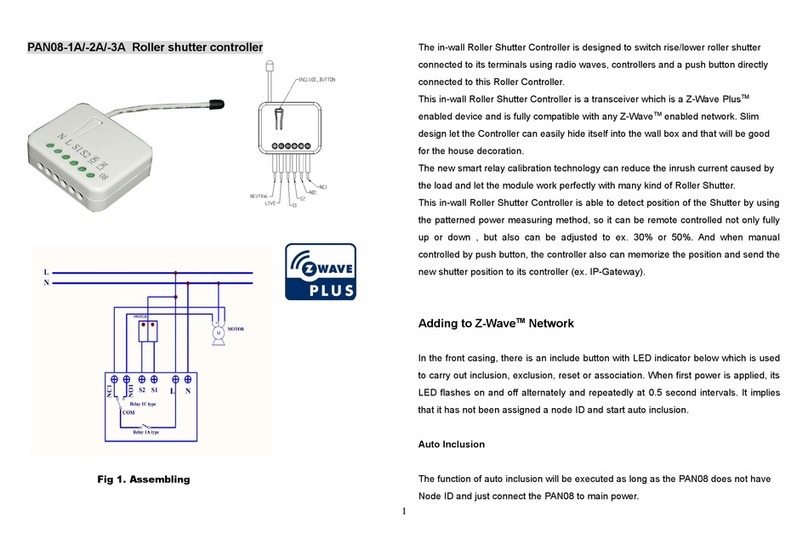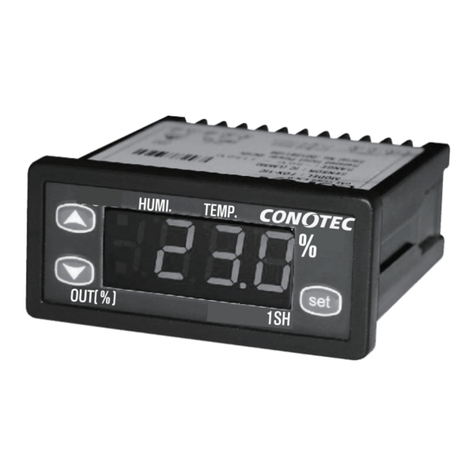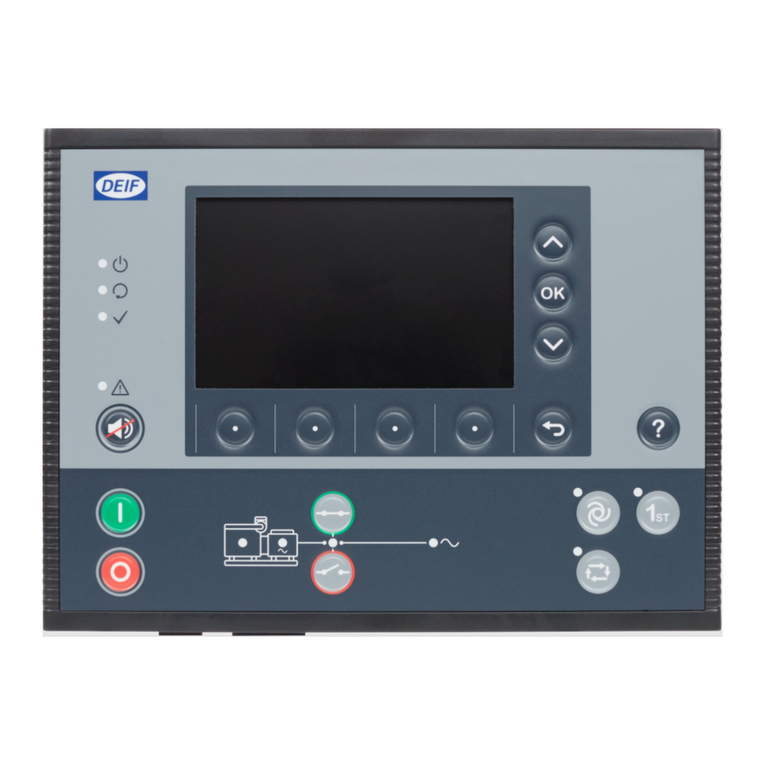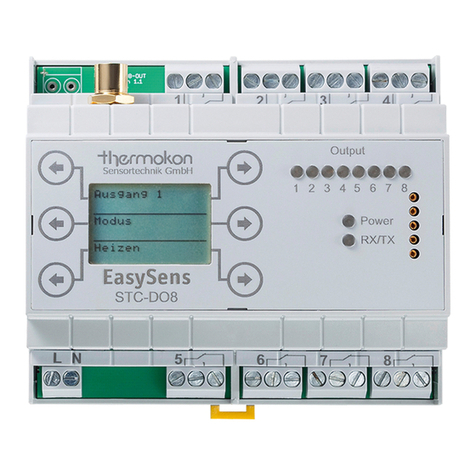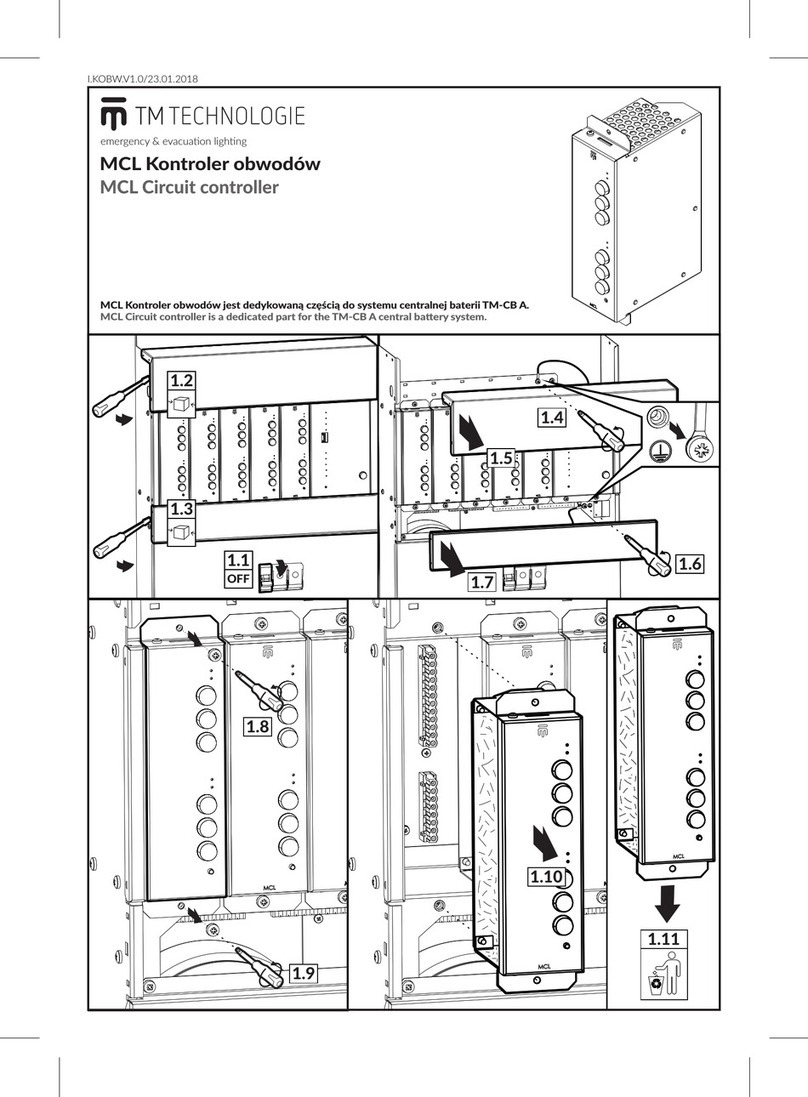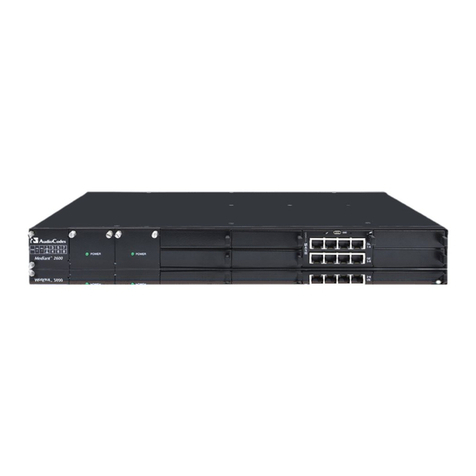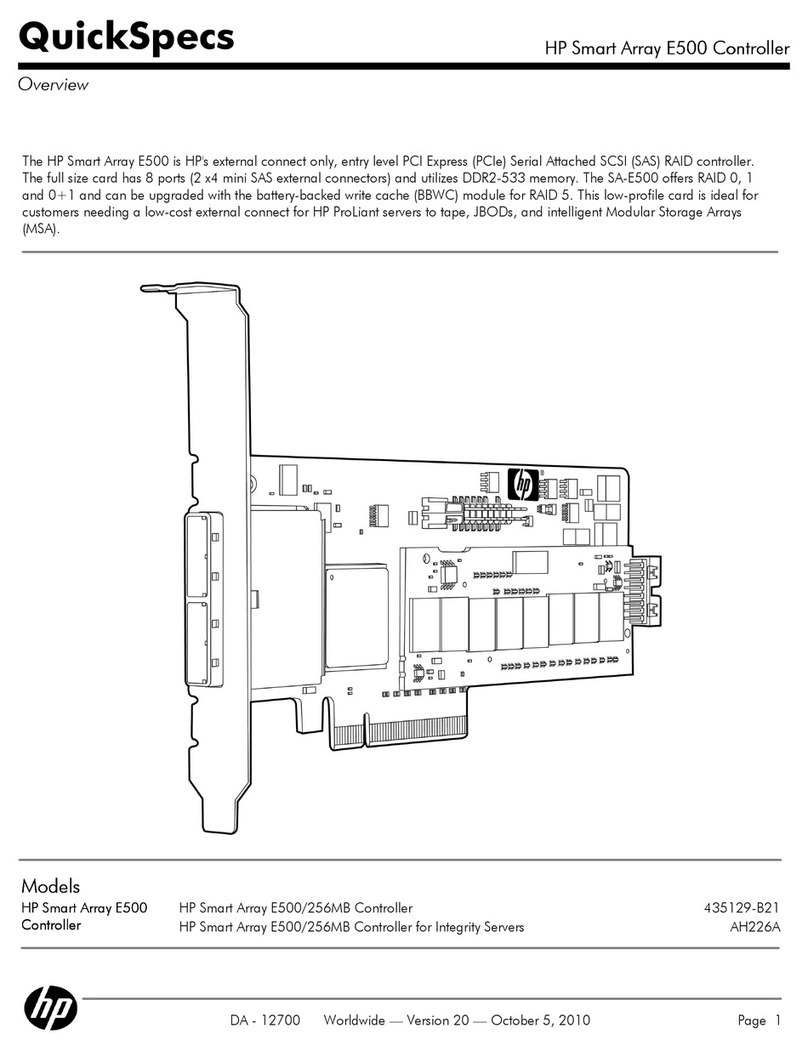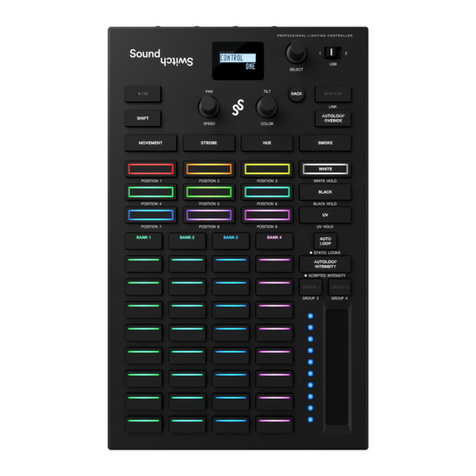
AS100/AS200/AS400
SRA/SRC/ASM
18 19
Modelle AS100/AS200/AS400/SRA/SRC/ASM:
Diese Servomotoren sind mit einem automatisch auskuppelnden Handrad
mit Priorität für den Motorantrieb ausgestattet. Um den Servomotor manuell
zu betätigen, drehen Sie den Pfeil auf dem Kupplungsknopf des Handrads
in Richtung des Dreiecksymbols auf dem Gehäuse (es kann erforderlich sein,
das Handrad um einige Grad zu drehen, um die Krallen zu lösen). Wenn
der Motor startet, kehrt er automatisch in die ausgekuppelte Position zurück.
Modelle OAP/OA15/ASP/AS50/AS80:
Einige dieser Servomotoren sind mit einem auskuppelbaren Zwischen-
getriebe ausgestattet. Wenn Sie den Kupplungshebel betätigen, wird
der Motor vom Getriebe getrennt. Achten Sie darauf, den Motor nach
der Betätigung des Handrades wieder einzukuppeln. Andernfalls
dreht der Motor beim Einschalten hoch, bis der Wärmeschutzschalter
anspricht. Bei fortgesetztem Betrieb kann dies den Motor beschädigen.
4 eLektriscHe anscHLÜsse unD prÜFungen iM
vorFeLD
Wenn der Servomotor mit INTELLI-, INTEGRAL-, POSIGAM-, MINIGRAL-
oder MINIGAM-Steuerungen ausgestattet ist, beachten Sie die spezi-
fische Dokumentation zum Stromlaufplan.
Andernfalls sind alle Komponenten des Servomotors an eine gemein-
same Klemmleiste angeschlossen. Nehmen Sie die Abdeckung ab, und
führen Sie die Kabel durch die Kabelverschraubungen (M20). Beachten
Sie den Stromlaufplan für Details zur Nummerierung der Klemmen.
Sowohl die Drehmomentbegrenzungsschalter als auch die Wegbegren-
zungsschalter müssen in das Steuersystem integriert werden (siehe
Beispiel-Stromlaufpläne), um möglichen Schäden am Servomotor oder
Ventil vorzubeugen.
Prüfen Sie Folgendes:
a) Stellen Sie sicher, dass die Versorgungsspannung den Angaben auf
dem Typenschild des Servomotors entspricht.
b) Prüfen Sie, dass alle Kabelverschraubungen ordnungsgemäß fes-
tgezogen sind.
c) Bringen Sie das Ventil von Hand in eine halbgeöffnete Position.
d) Führen Sie eine elektrische Öffnung aus, und prüfen Sie, dass
der Motor sich in die richtige Richtung dreht. Drücken Sie den Weg-
begrenzungsschalter “OPEN”; der Motor muss stoppen.
Prüfen Sie mit demselben Verfahren, dass die elektrische
Schließung und der Wegbegrenzungsschalter “CLOSED” ordnungsgemäß
arbeiten.
e) Alle Modelle außer OA: Führen Sie eine elektrische Öffnung
aus. Drücken Sie den Drehmomentbegrenzungsschalter “OPEN”;
der Motor muss stoppen.
Prüfen Sie mit demselben Verfahren, dass die elektrische Schließung
und der Drehm
Wenn dabei Fehlfunktionen auftreten, prüfen Sie die Verkabelung.
Um einen sicheren Betrieb zu gewährleisten wird empfohlen, die
Stromversorgung zu diesem Zeitpunkt zu unterbrechen, insbesondere
wenn das maximale Drehmoment des Servomotors 300 Nm übers-
chreitet.
5 einsteLLung Der MecHaniscHen anscHLäge
unD wegBegrenZungsscHaLter
Beschreibung und Funktion der mechanischen Anschläge (nur für
Geräte mit 1/4 Umdrehung):
Diese Elemente verhindern eine Überschreitung des Wegs bei Handra-
dbetrieb. Die Anschläge können entweder auf dem Servomotor selbst
oder, falls vorhanden, auf dem 1/4-Umdrehungs-Schneckengetriebe
platziert werden.
Die Servomotoren und Getriebe sind für den 90°-Betrieb vorgesehen
und geprüft. Die Feineinstellung der Position der Anschlagschrauben
ist für maximal ± 2° möglich.
Beschreibung und Funktion der Wegbegrenzungsschalter:
Die Nocken, die die Wegbegrenzungsschalter aktivieren, befinden
sich auf einem zylindrischen Block, der nicht zerlegt werden muss. Jede
Nocke kann unabhängig von den anderen eingestellt werden. Die weißen
und schwarzen Nocken sind zum Öffnen und Schließen von Wegbegren-
zungen vorgesehen. Die anderen Nocken sind für optionale zusätzliche
Wegbegrenzungsschalter vorgesehen (2 oder 4).
Betätigung der Nocken:
a) Führen Sie einen Schraubenzieher in den Schlitz des Knopfes
mit derselben Farbe wie die einzustellende Nocke ein.
b) Üben Sie leichten Druck aus, um die Nocke aus der gesperrten
Position zu lösen.
c) Drehen Sie mit dem Schraubenzieher die Nocke in die Position,
die eine Betätigung des Wegbegrenzungsschalters ermöglicht.
d) Ziehen Sie den Schraubenzieher heraus, und stellen Sie sicher, dass
der Knopf in die Ausgangsposition zurückkehrt, wodurch die Nocke
an der gewählten Position fixiert wird.
Verfahren zur Einstellung der mechanischen Anschläge und Weg-
begrenzungsschalter:
a) Lösen Sie die Anschlagschrauben um 2 Umdrehungen (nur für Geräte
mit 1/4 Umdrehung).
b) Bringen Sie das Ventil von Hand in die geschlossene Position. Wenn
bei Geräten mit 1/4-Umdrehung die mechanischen Anschläge erreicht
werden, bevor das Ventil vollständig geschlossen ist, wurde die
maximale Einstelltoleranz von 2° überschritten; versuchen Sie nicht,
dieses Limit zu überschreiten.
c) Stellen Sie die Nocke des Wegbegrenzungsschalters “CLOSED” ein.
d) Drehen Sie die Anschlagschrauben im Uhrzeigersinn in Richtung
des mechanischen Kontakts, lösen Sie sie um 1,5 Umdrehun-
gen, und fixieren Sie sie mit einer Gegenmutter (nur Geräte mit
1/4 Umdrehung).
Führen Sie dasselbe Verfahren in der offenen Position aus.
Führen Sie eine vollständig elektrische Öffnung und Schließung des
Ventils aus. Der Motor muss am Wegbegrenzungsschalter und nicht
an den mechanischen Anschlägen stoppen (prüfen Sie den verfügbaren
zusätzlichen Weg bis zum Anschlag mit dem Handrad).















